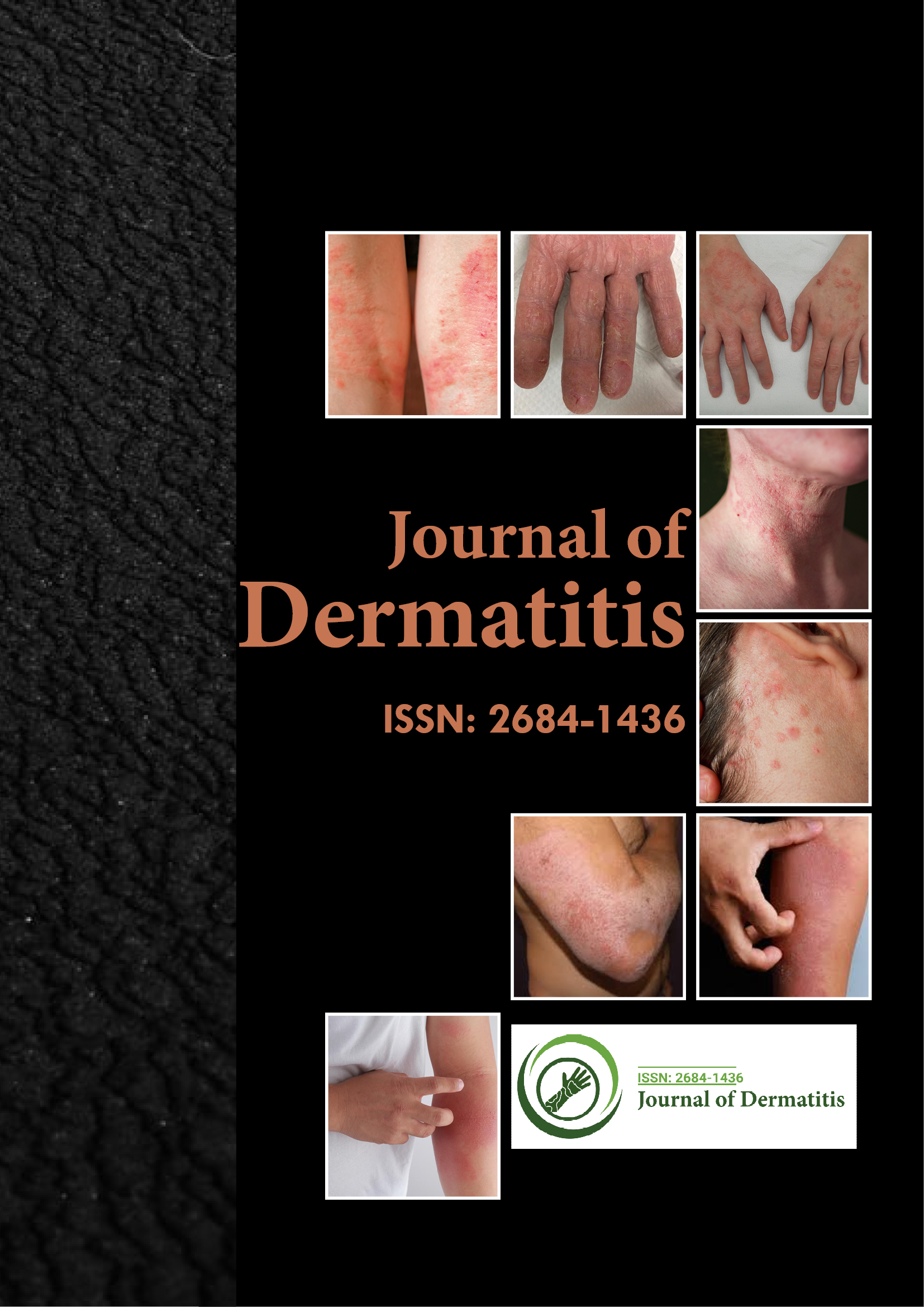Indexed In
- RefSeek
- Hamdard University
- EBSCO A-Z
- Euro Pub
- Google Scholar
Useful Links
Share This Page
Journal Flyer

Open Access Journals
- Agri and Aquaculture
- Biochemistry
- Bioinformatics & Systems Biology
- Business & Management
- Chemistry
- Clinical Sciences
- Engineering
- Food & Nutrition
- General Science
- Genetics & Molecular Biology
- Immunology & Microbiology
- Medical Sciences
- Neuroscience & Psychology
- Nursing & Health Care
- Pharmaceutical Sciences
Perspective - (2022) Volume 7, Issue 3
Sweat in the Pathogenesis of Skin Dermatitis
Berbot Puneet*Received: 02-May-2022, Manuscript No. JOD-22-17067; Editor assigned: 06-May-2022, Pre QC No. JOD-22-17067(PQ); Reviewed: 19-May-2022, QC No. JOD-22-17067; Revised: 27-May-2022, Manuscript No. JOD-22-17067(R); Published: 03-Jun-2022, DOI: 10.35248/2329-6925.22.7.153
Description
India, as a tropical country, has a wide variation of temperatures in different parts of the country. During the months of May and June, average temperatures of 44–45°C with low humidity are common in metro centers. Such climatic circumstances cause excessive sweating, which is exacerbated by outdoor activities, long-distance travel, overcrowding and continuous labor in poorly ventilated areas, among other things. Sweat plays a crucial part in body temperature regulation, however due to harsh climatic conditions such as high air temperature and high humidity, which results in a high heat index, the body's surplus sweat does not always evaporate entirely, resulting in sweat stagnation. Excessive sweating can create an irritating reaction and a dermatitis-like clinical appearance under occlusive settings. Many examples of sweat-induced dermatitis with various clinical manifestations have been recorded in recent years.
Sweat is a clear, hypotonic fluid produced by the eccrine sweat glands. The various components of sweat are involved in skin homeostasis in the broadest sense, including temperature regulation, skin hydration and immune function. Therefore, sweat plays an important role in maintaining skin homeostasis. Therefore, abnormal sweating is likely to endanger human health. For example, in Atopic Dermatitis (AD), stagnation of sweat due to obstruction of sweat glands and sweat pores, leakage of sweat from sweat glands to external tissues and impaired sweat secretion from sweat glands have been confirmed. In recent years, the hypothesis that atopic dermatitis is a sweat-congested syndrome has been clarified by the establishment of a dynamic analysis method for sweat glands. Sweat production and tissue penetration are caused by dermatitis and are said to promote itching. In addition, a metabolic analysis of sweat in patients with atopic dermatitis confirmed that the glucose concentration of AD sweat increased depending on the severity and phenotype of the skin and that the increase in glucose affected the homeostasis of the skin.
Multiple analyzes of sweat in AD patients have revealed new aspects of pathology and appropriate means of treating sweat are expected to contribute to long-term control of AD.
Pathogenesis of skin dermatitis
The normal range for core body temperatures is 36°C to 37.5°C (96.8°F to 99.5°F). Sweat glands play a crucial part in homoeothermic creatures' thermoregulation. During the hotter months of the summer, especially in the tropics, excessive sweating and subsequent evaporation aid in lowering body temperature and maintaining a safe normal core body temperature. Burns can develop when skin is exposed to an external heat source with a temperature greater than 44°C (111° F) for an extended period of time, whereas erythema occurs when skin is subjected to prolonged and repeated infrared heat inadequate to induce burn. Thermal stress can also cause a variety of inflammatory dermatomes, with sweat playing a direct or indirect part in the process.
Skin barrier dysfunction is endemic to Atopic Dermatitis (AD) and causes dryness, irritation and increased permeability to irritants, allergens and pathogens. Ermine sweat acts as part of the skin's protective barrier. Fluctuations in the sweating response have been observed in patients with AD and changes in sweat composition and kinetics are underestimated as a key factor in the disease cycle. This review describes the role of sweat in the pathogenesis of AD, reviews evidence of abnormal sweat composition, secretion and neuroimmune response to sweat in atopic skin and emphasizes the value of sweat management.
Sweat can dry out the skin and some people's eczema flare-ups may be triggered by it. Individuals can remove sweat or other irritating substances off the skin as soon as possible to help manage sweating and eczema. Sweating and discomfort can be reduced by exercising in cooler areas and keeping in the shade during hot weather. People can use a heavy moisturizer and sunscreen after rinsing off sweat.
Citation: Puneet B (2022) Sweat in the Pathogenesis of Skin Dermatitis. J Dermatitis.7:153.
Copyright: © 2022 Puneet B. This is an open access article distributed under the terms of the Creative Commons Attribution License, which permits unrestricted use, distribution, and reproduction in any medium, provided the original author and source are credited.

